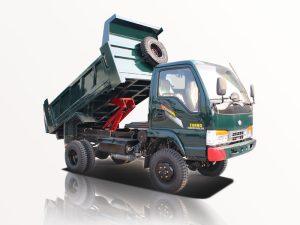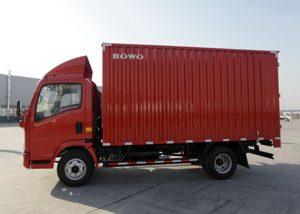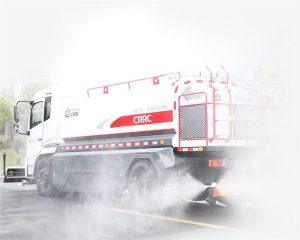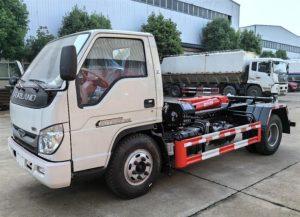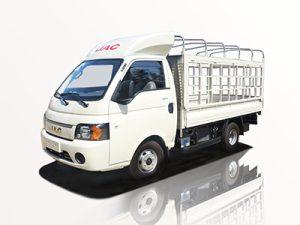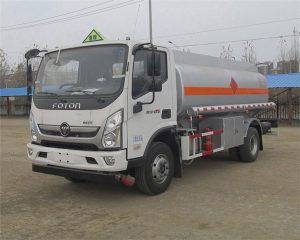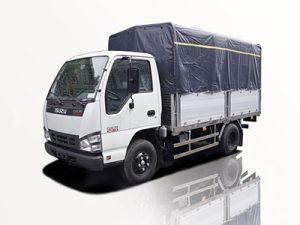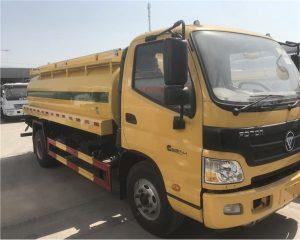Monday to Saturday - 8:00 -17:30
10 Wheeler Trucks: A Comprehensive Guide to Understanding Their Features and Benefits
When it comes to heavy-duty transportation, the 10 wheeler truck can be a game-changer. These trucks provide the ideal balance between capacity and maneuverability, making them popular for various applications, from construction to delivery services. In this article, we will explore everything you need to know about 10 wheeler trucks including their types, specifications, advantages, and practical applications.
Understanding 10 Wheeler Trucks
The term “10 wheeler truck” refers to trucks with ten wheels that generally fall into two categories: single axle and tandem axle. These trucks are primarily designed for transporting large loads over varied terrains.
Types of 10 Wheeler Trucks
There are two main types of 10 wheeler trucks:
- Single Axle 10 Wheeler Trucks: These trucks have one rear axle and are lighter in weight, making them suitable for local hauling.
- Tandem Axle 10 Wheeler Trucks: With two rear axles, these models are more stable and can carry heavier loads over long distances.
Common Models of 10 Wheeler Trucks
| Model | Manufacturer | Load Capacity |
|---|---|---|
| Freightliner M2 106 | Freightliner | Up to 33,000 lbs |
| Peterbilt 337 | Peterbilt | Up to 26,000 lbs |
| International MV Series | International | Up to 20,000 lbs |
Specifications of 10 Wheeler Trucks
Understanding the specifications of 10 wheeler trucks helps businesses choose the right model tailored for their needs.
Dimensions
10 wheeler trucks come in various dimensions depending on the make and model. Typical dimensions include:
- Length: Ranges from 24 to 29 feet.
- Width: Typically 8 feet.
- Height: Ranges from 10 to 13 feet.
Engine Options
Most 10 wheeler trucks come equipped with powerful diesel engines that range from 6.0 to 12.0 liters, providing approximately 200 to 400 horsepower.
Transmission Systems
These trucks commonly feature automatic or manual transmission systems, allowing flexibility for different driving conditions.
Benefits of 10 Wheeler Trucks
10 wheeler trucks offer various advantages for businesses engaged in heavy transport.
Capacity and Efficiency
Due to their larger capacity compared to smaller trucks, 10 wheeler trucks can transport more goods in a single trip, resulting in increased operational efficiency.
Maneuverability
Despite being larger than smaller trucks, 10 wheelers are still relatively easy to maneuver compared to larger trucks, making them suitable for urban driving and tight spaces.
Cost-Effectiveness
In terms of fuel efficiency and the ability to carry more, 10 wheeler trucks are a cost-effective choice for many companies.
Practical Applications of 10 Wheeler Trucks
The versatility of 10 wheeler trucks makes them suitable for various applications.
Construction
These trucks are often used on construction sites to transport equipment, building materials, and debris.
Delivery Services
10 wheeler trucks can also serve as delivery vehicles for moving large quantities of goods, such as furniture or supplies.
Waste Management
In waste management, these trucks are often used for garbage collection, as they can carry significant loads, thereby reducing the number of trips required.
Factors to Consider When Buying a 10 Wheeler Truck
Investing in a 10 wheeler truck demands careful consideration of various factors.
Load Requirements
Understand the type of loads you will be carrying to decide if a single or tandem axle truck is more suitable.
Fuel Efficiency
Check engine performance and fuel efficiency ratings to ensure you choose a truck that suits your budget.
Maintenance Costs
Factor in the maintenance costs associated with different models, as this can influence long-term expenses.
Financing Options for Purchasing 10 Wheeler Trucks
When purchasing a 10 wheeler truck, several financing options are available to facilitate the transaction.
Loans
Many banks and financial institutions offer commercial truck loans that allow buyers to pay for the vehicle over time.
Leasing
Leasing is another option for businesses that may not want to commit to purchasing outright. This can provide flexibility and lower upfront costs.
Incentives for Businesses
Look for government incentives or tax breaks for businesses investing in eco-friendly or fuel-efficient vehicles.
Maintenance Tips for 10 Wheeler Trucks
Proper maintenance is crucial to ensuring the longevity and reliability of your 10 wheeler truck.
Regular Inspections
Routine inspections should be conducted on brakes, tires, and engines to pinpoint issues before they become major problems.
Oil Changes
Regular oil changes can significantly extend engine life. It’s advisable to follow the manufacturer’s guidelines regarding frequency.
Brake System Maintenance
Given the weight and load capacity, maintaining the brake system is critical. Regularly check for wear and tear to ensure safety.
Frequently Asked Questions (FAQs)
What is the average cost of a 10 wheeler truck?
The cost of a new 10 wheeler truck can range from $100,000 to $150,000, depending on the manufacturer and specifications. Used trucks can be significantly less, starting around $40,000.
How much weight can a 10 wheeler truck carry?
Typically, a 10 wheeler truck can carry loads between 20,000 to 33,000 pounds, depending on the model and configuration.
Are 10 wheeler trucks fuel-efficient?
10 wheeler trucks are generally more fuel-efficient than larger trucks due to their size, but fuel efficiency will vary based on engine type and load conditions.
What types of businesses use 10 wheeler trucks?
Industries such as construction, logistics, waste management, and food distribution commonly utilize 10 wheeler trucks for their varied transport needs.
Can I drive a 10 wheeler truck with a regular driver’s license?
In most regions, a commercial driver’s license (CDL) is required to operate a 10 wheeler truck due to its weight and classification.
What are the best practices for driving a 10 wheeler truck?
Best practices include proper loading techniques, understanding vehicle dimensions for navigation, regular vehicle checks, and maintaining a safe distance from other vehicles on the road.


